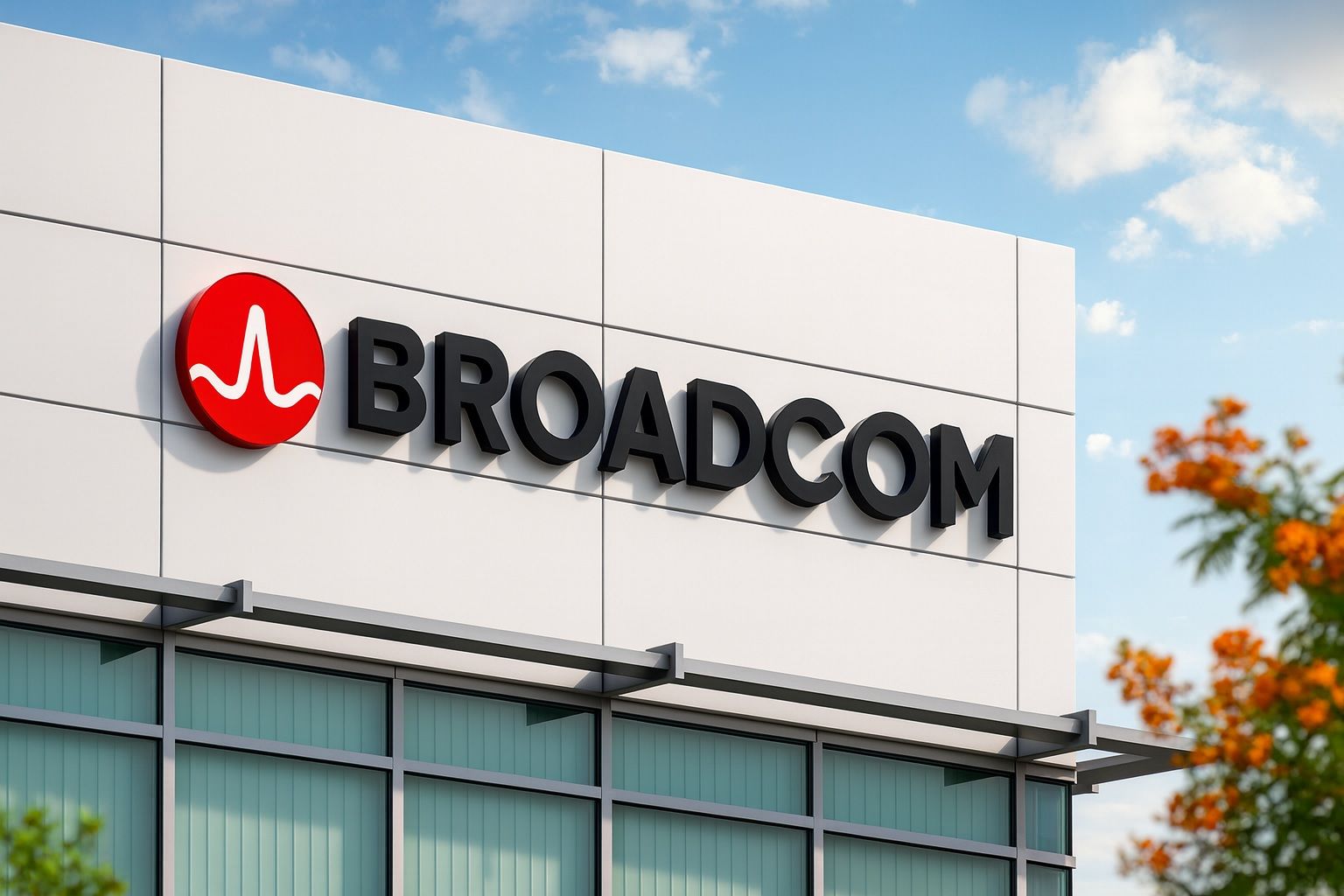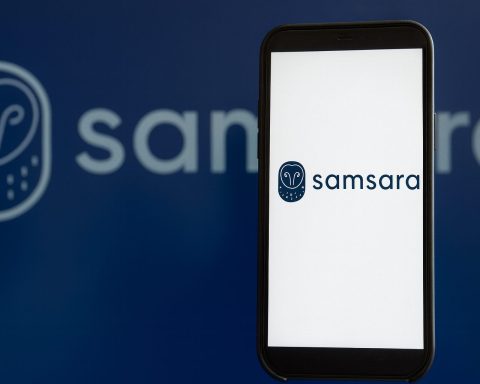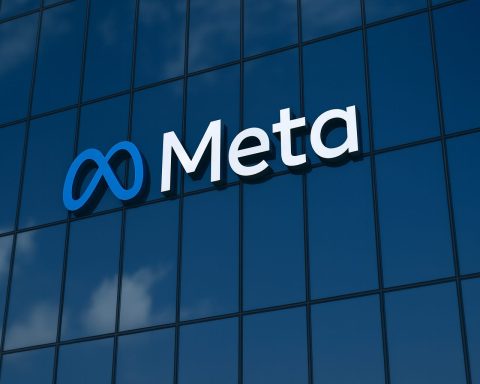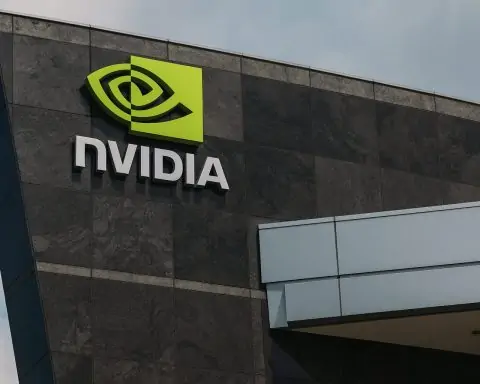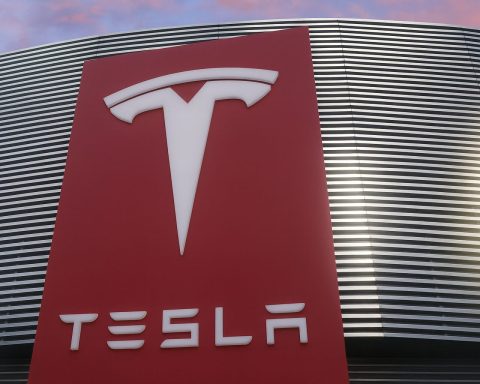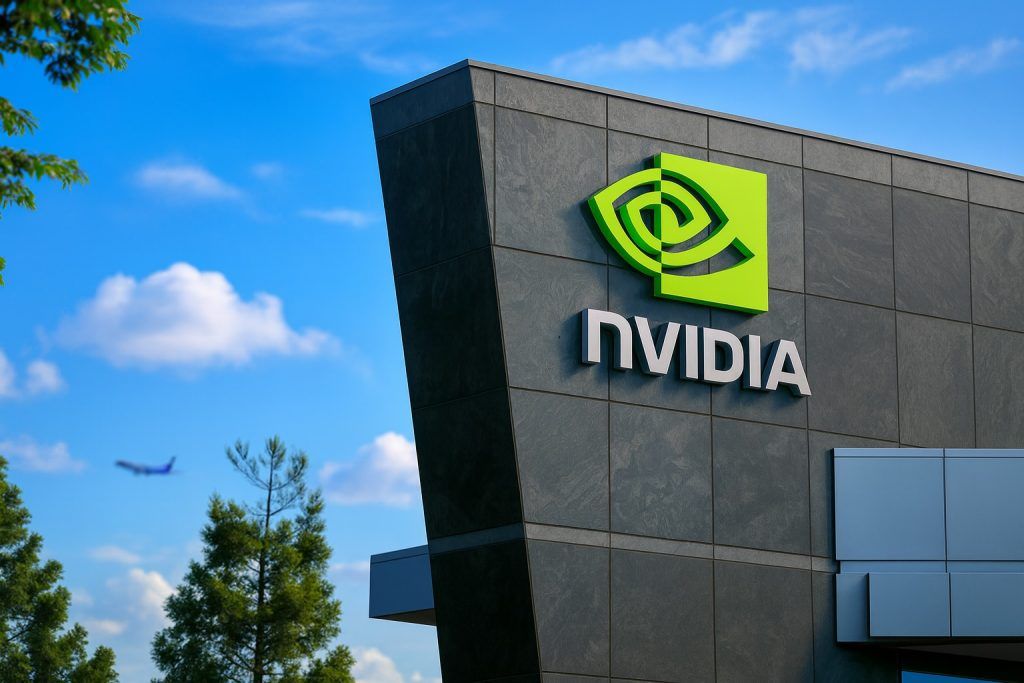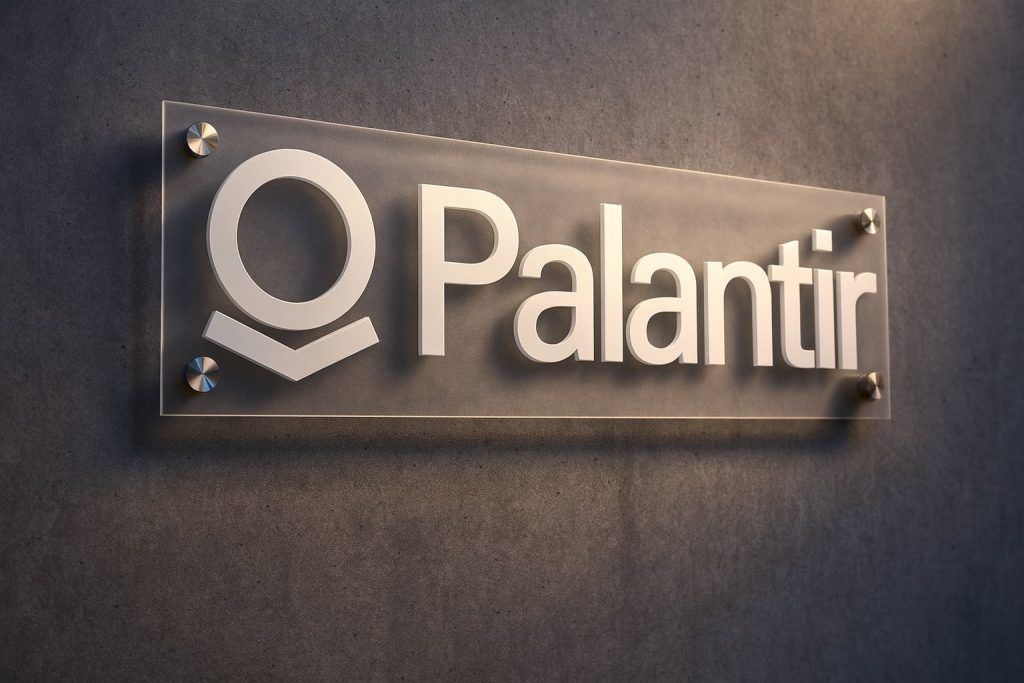- Current Price & YTD Performance: As of Oct. 10, 2025, Broadcom (NASDAQ: AVGO) closed at $324.63 (down 5.9% that day) [1]. Early Oct. 13 pre-market quotes were near $336. Year-to-date the stock has roughly doubled (≈90%), driven by booming AI demand and a market cap around $1.6 trillion [2] [3].
- Record Q3 Results: Fiscal Q3 2025 (ended Aug. 3) delivered blowout results: $15.95B revenue (+22% YoY) and non-GAAP EPS $1.69 (above consensus) [4]. AI-focused semiconductor sales surged 63% YoY to $5.2B [5] [6], and the company finished the quarter with a record $110B backlog (≈50% in chips) supporting forward visibility [7].
- AI Chip Mega-Order & Guidance: In early Sept., Broadcom announced a $10 billion order for custom AI chips (widely believed to be from OpenAI) to be delivered by 2026 [8] [9]. Management said this deal would make AI-related sales “improve significantly” and raised Q4 FY2025 revenue guidance to about $17.4–17.5B [10] [11]. Bernstein and other analysts now project fiscal 2026 AI sales could exceed $40B (vs. $30B prior forecast) [12].
- Valuation & Dividend: Broadcom’s valuation is elevated but reflecting high growth: trailing GAAP P/E is ~85×, non-GAAP P/E ~~40× (forward P/E mid-30s) [13]. Price/sales is ~25× (on ~$65B FY2025 revenue) [14]. The stock yields about 0.7% (quarterly dividend $0.59, annual $2.36) [15]. By comparison, peers like Nvidia trade at forward P/E ~36× [16], and AMD ~30× [17].
- Analysts & Outlook: Wall Street is overwhelmingly bullish. Nearly 90% of analysts rate AVGO “Buy” (zero sell ratings) [18]. TipRanks reports an average 12-month target of $377 (≈16% upside) [19], with highs at ~$420 [20]. MarketBeat notes a consensus Buy rating and $357 average target [21]. Firms like KeyBanc and Mizuho have set $410–420 targets, citing Broadcom as “king of AI custom chips” [22] [23].
- Sector Context & Risks: Broadcom plays a unique role in the AI/semiconductor boom, supplying networking gear and custom ASICs (XPUs) to cloud giants [24]. Its gains have outpaced many chip peers (e.g. AMD) though lag Nvidia’s absolute growth. The stock is part of the “Magnificent Seven” of tech giants but also carries hardware+software diversification (thanks to VMware). The sector is volatile: on Oct. 10, renewed U.S.–China trade tensions (new tariffs and export curbs) hit tech markets hard (Nasdaq –3.6%) [25], dragging AVGO briefly below its 50-day MA [26]. Experts note, however, that this correction was likely healthy consolidation – Broadcom’s long-term AI-driven story remains intact according to many strategists [27] [28].
Stock Price & Recent Trading
Broadcom’s stock has been on a steep climb in 2025. After a 10-for-1 split in late 2024, AVGO surged from roughly $180 in April 2025 to mid-$300s by early October. As reported, the Oct 10, 2025 closing price was $324.63 (down 5.91% that day) [29]. In pre-market trading on Oct 13 it was back up near $336.00 (up ~3.5% from Friday’s close) [30]. This volatility reflects a recent selloff triggered by a broad tech market pullback, but broadly the stock has nearly doubled (≈90%) since spring [31] [32].
The year’s rally is grounded in fundamentals. Broadcom’s market capitalization is roughly $1.6 trillion, making it one of the world’s largest tech companies [33]. By comparison, NVIDIA’s market cap is ~2–3T and AMD’s around 0.3T. The broader semiconductor sector has been climbing too; for example, the Philadelphia semiconductor index (SOX) has hit fresh highs on the AI boom. Unlike many high-growth peers, Broadcom also pays a meaningful dividend (currently $0.59 per quarter, about a 0.7% yield [34]) and carries significant free cash flow.
Technically, AVGO is still above its key moving averages. The 50-day average is around $321.9 and the 200-day $261.4 [35]. Friday’s drop to ~$324 briefly dipped below the 50-day, signaling a short-term breather. However, analysts say if Broadcom can hold in the $320s and consolidate, it could set up for another leg higher [36]. On the downside, heavy macro risks (rate fears, trade war) could push it toward the 200-day level (near $260–$280) temporarily. Overall, the trend has been bullish, with institutional and retail investors betting on the AI-driven growth story even as near-term headwinds (trade, rates) oscillate.
Recent Developments: AI Boom and Earnings
In the last few weeks, Broadcom has dominated tech headlines. On Sept 4, it reported record Q3 FY2025 earnings: revenue of $15.95B (+22% YoY) and non-GAAP EPS $1.69 (beating the ~$1.66 consensus) [37] [38]. Key drivers were AI and software. Its AI semiconductor segment grew 63% year-over-year to $5.2B [39], now roughly one-third of sales, thanks to continued momentum in networking chips (e.g. Tomahawk 6) and custom ASICs for hyperscale data centers [40] [41]. The VMware software unit also grew (+17% to $6.79B) and delivered high margins. Free cash flow in Q3 jumped to $7.0B (about 44% of revenue) [42], underscoring Broadcom’s cash generation.
Critically, Broadcom revealed a “blockbuster” $10 billion order from a new cloud customer for custom AI chips [43]. Market and media reports soon confirmed the customer is almost certainly OpenAI, which is co-developing a custom XPU chip for 2026 with Broadcom [44] [45]. CEO Hock Tan emphasized that this deal would make AI-related sales “improve significantly” in fiscal 2026 [46]. Analysts at Morgan Stanley, J.P. Morgan, and Bernstein noted that adding OpenAI as a customer could push Broadcom’s 2026 AI revenues well beyond previous estimates (Bernstein now sees $40B+ vs ~$30B before) [47]. (Bernstein also noted that Broadcom holds 100% of Google’s TPU supply through 2026, and is helping Meta with its AI chips [48].)
Broadcom raised its Q4 (fiscal Q4 ends Oct 2025) guidance accordingly, forecasting $17.4–17.5B revenue [49] [50]. Management cited “strong and accelerating” AI demand as the reason for this beat-and-raise. On the earnings call, Hock Tan noted customers are “strongly investing” in AI infrastructure [51] despite macro uncertainties. The company also just announced a 10-for-1 stock split (effective Dec. 2024) to boost liquidity [52], which made shares more affordable post-run-up.
Aside from AI, Broadcom’s diversification is a highlight. The massive $69B VMware acquisition closed in Nov 2023, giving nearly half of revenue (≈42%) from high-margin software [53]. Broadcom is integrating AI features into VMware’s Cloud Foundation 9.0, aiming to sell on-prem AI cloud solutions to large enterprises [54]. This software arm provides recurring revenue that buffers volatility in the cyclical chip markets. Broadcom even recently raised $5B in debt (while shares are high) to fund further growth [55].
Other recent news includes leadership stability: CEO Hock Tan (age 73) extended his contract through 2030 [56]. This was well-received; Tan is widely credited with turning Broadcom into an AI leader through savvy M&A and a focus on profit (Broadcom’s operating margins are among the highest in tech). The Q3 earnings also noted a record backlog of $110B (see above), suggesting multi-year visibility. On Oct. 10, even while markets swooned, Broadcom modestly outperformed some peers, reflecting confidence in its strategic path.
Valuation, Technicals & Investor Sentiment
Fundamental Ratios: Broadcom’s sky-high valuation reflects sky-high growth expectations. Trailing GAAP P/E is roughly 85× [57], but this is inflated by non-cash charges (amortization of VMware intangibles). On a non-GAAP basis analysts prefer (excluding those amortizations), AVGO trades at closer to ~40× earnings [58]. Forward P/E (FY2026 estimates) is in the mid-30s [59], still premium but lower. By contrast, NVIDIA’s forward P/E is ~50× (though it’s higher-quality growth) and AMD around 30× [60]. Broadcom’s price/sales is about 25× (with ~$65B expected 2025 revenue) [61], versus its historical average under 10×. These metrics underscore that “perfection is priced in” – bulls argue Broadcom’s top-tier margins and AI pipeline justify it, while bears caution even a small disappointment could cause a sharp re-rate [62].
Dividend & Cash: Broadcom still returns cash to shareholders: current quarterly dividend $0.59 (post-split), for about 0.7% yield [63]. Its payout ratio (~60%) is modest given its FCF. The company has raised its dividend steadily; at current earnings, it could afford more, but management has prioritized growth investments. Share buybacks have been limited, partly because of the VMware deal’s accounting impact.
Technical Levels: After the recent pullback on Oct 10, AVGO sat around $325–$330 on Oct 13. It remains well above its 200-day moving average (~$261), evidence of the strong uptrend. The 50-day (~$322) had served as support; the mid-October dip briefly broke that line [64]. Chart watchers note the stock’s RSI was in overbought territory in September, so a modest correction was expected. If buyers defend the low-$320s, Broadcom could form a new base. A break back above $340 would reclaim early-September highs. Conversely, a sustained move below $300 (near the 200-day) is unlikely without a broader tech selloff. Overall, many technicians see this pullback as a buyable dip, given the underlying momentum [65].
Sentiment: Investor sentiment is very bullish but watchful. According to Bloomberg data cited by TS2.tech, roughly 90% of analysts rate AVGO a Buy [66]. TipRanks shows 28 “Strong Buy” and 26 “Buy” among 56 tracked analysts [67], with zero Sell ratings. The average 12-month price target is around $377 [68] (about 16% above recent price), with the consensus range from ~$300 to $420 [69]. MarketBeat notes the “mixed” consensus target of ~$357 (only ~3.5% above $345) but highlights that many top firms (KeyCorp, Macquarie, Bernstein) have set $400+ targets [70] [71].
Expert commentators echo the mix of excitement and caution. On CNBC’s earnings alert, Oppenheimer analyst George Tsilis observed Broadcom’s Q3 beats and “impressive guidance,” but said the stock’s muted post-earnings pop was due to lofty valuation: “the biggest culprit… was valuation” [72]. Emarketer’s Jacob Bourne told Reuters that Broadcom’s custom AI offerings make it well-positioned as Big Tech races to scale AI: “While Nvidia’s GPUs remain the default choice, custom silicon can deliver niche performance gains that help break through bottlenecks” [73]. BofA analysts quipped that while Broadcom is clearly grabbing share, “the AI pie could just be getting bigger,” implying room for multiple winners [74].
Recent market turbulence (trade war fears on Oct 10) did briefly spook investors. Zacks noted markets were “routed” after trade conflicts escalated [75] [76], and Broadcom’s stock reflected that panic with a sharp intraday drop. Still, industry observers like James St. Aubin of Ocean Park see the dip as normal volatility, insisting it doesn’t derail the AI thesis. Indeed, by week’s end AVGO had recovered much of Friday’s losses as buyers stepped in. On balance, the sentiment is: “perfection is priced in,” but fundamentals remain strong [77].
Analyst Forecasts & Ratings
Short-Term Outlook: In the near term, analysts expect Broadcom to cruise on its momentum. The consensus 2025 EPS estimate is about $5.38–5.41 (FY ending Oct 2025) [78]. With Q4 guidance of ~$17.4B (and EPS likely around $1.75–1.80), FY2025 will likely end with ~25% revenue growth and mid-20s% EPS growth. For FY2026, estimates have been rising: originally around $6.00 EPS, they may tick higher now that AI sales are re-accelerating. Guidance from big customers (e.g. Google, Meta, OpenAI) will be key catalysts.
Short-term price targets are largely bullish. As of mid-Oct, the average 12-month target is in the mid-$350s [79]. Mizuho Securities (Sept. 2025) reiterated Buy/Outperform with a $410 target, calling Broadcom the “king of AI custom chips” [80]. KeyBanc has an Overweight with $420 [81]. Barclays, BofA and Citi have also raised targets into the high $300s or $400 (some up to $400) [82]. In sum, most models imply double-digit upside (10–20%) over the next year if the bull case holds.
Long-Term Outlook: Over the next 3–5 years, Broadcom’s growth hinges on sustaining its position in AI and integrating VMware. The consensus is still for strong double-digit revenue/EPS growth, driven largely by AI compute and networking (fueled by secular trends in data centers and 5G/connected devices). Sector forecasts (e.g. by McKinsey or TS2) project that AI-driven data center spending will keep growing at 20–30% annually. With Broadcom’s shrinking exposure to legacy segments (e.g. set-top boxes, DSPs), the company should maintain high margins. Risks to long-term forecasts include any geopolitical or regulatory actions that could cut into Chinese sales, competition from other chipmakers (Nvidia, AMD, Intel, Qualcomm), or internal execution missteps (like R&D delays or integration issues).
On balance, most analysts have a “buy and hold” view. The most optimistic see Broadcom as “the next Nvidia” in terms of market cap (though full parity is debated) – at least in the sense of capturing a big slice of the AI market [83]. The more cautious acknowledge that Broadcom’s valuation is rich, but believe its earnings growth can justify a high multiple for a while. (As one note, Bernstein’s Stacy Rasgon mused that Broadcom’s lackluster rally post-earnings was simply a sign that “expectations were already high” [84].) Broadcom’s strong cash flows and shareholder returns provide a margin of safety, even if sentiment cools.
Semiconductor Sector and Peers
Broadcom sits in the hot corner of AI and networking hardware, but it’s not the only player. Its biggest peer and AI-market leader is Nvidia, whose GPUs dominate AI training. Nvidia’s revenue growth has been extremely strong (e.g. Q1 FY2026 +73% in data center [85]) and it trades at higher multiples. However, Nvidia is also under more regulatory pressure (China export limits) and has more volatile earnings. Broadcom is often compared to Nvidia by investors, but analysts note Broadcom’s diversified model (chips + software) offers stability. Nasdaq’s recent analysis pointed out that Broadcom’s forward P/E (~38×) is slightly higher than Nvidia’s (~36×) [86], yet Broadcom is rated more highly by Zacks due to its consistency.
AMD is another peer in AI hardware: it sells GPUs and CPUs, and recently announced its own custom deal with OpenAI worth “tens of billions” [87]. AMD’s chips power many of the same workloads, but its stock has underperformed AVGO in 2025 (Broadcom up ~90% vs AMD up less, impacted by trade war on Oct 10). AMD focuses more on PCs and consoles too, whereas Broadcom’s business is largely cloud and infrastructure. In terms of valuation, AMD’s P/E (~30×) is lower than Broadcom’s. AMD also has no meaningful dividend.
Qualcomm and Intel are more distant peers. Qualcomm’s strengths lie in wireless and on-device AI (e.g. Snapdragon), with a P/E around 33× and higher dividend yield (~2.5%). Intel and others (Micron, etc.) are not direct comparisons in AI. Cisco and Arista compete with Broadcom on networking gear; Cisco’s market cap is ~0.5T, P/E ~15×, but Cisco lacks direct AI chips. Broadcom’s networking products (Tomahawk switches, Jericho routers) are key in AI data centers, and recently it showcased new AI-optimized networking at the OCP Summit [88], reaffirming its technological edge. (Cisco’s attempts at AI networking with acquisition like Pensando show it’s chasing Broadcom’s tail.)
Sector sentiment is generally positive: the SOX semiconductor index and tech heavy Nasdaq have hit new highs in 2025 (before the recent pullback). Analysts say the top-tier chipmakers (Nvidia, Broadcom, TSMC, etc.) are capturing the lion’s share of industry profits, while smaller players struggle [89]. As a market leader with exposure to AI and software, Broadcom is often ranked among the “best semiconductor stocks” by Forbes, Zacks and others. For example, a Zacks piece suggested AVGO is a better near-term buy than NVDA [90] because of Broadcom’s diversified model and lower near-term risk.
Overall, Broadcom’s performance in 2025 has outpaced or matched all “Magnificent Seven” tech stocks (Apple, Amazon, Nvidia, Google, Meta, Microsoft, Tesla) [91]. Given its unique niche, many investors now view Broadcom as an AI infrastructure play that can still run higher even in a crowded space. The key peer risk is concentration: if any major hyperscaler (say, Google or Meta) decided to develop its own silicon in-house or source elsewhere, Broadcom could lose a large customer. So far, the story is one of deep engagement – Broadcom often co-designs chips with its customers, creating a high switching cost. But vigilance is warranted.
Conclusion
Broadcom (AVGO) stands at an inflection point. It has leveraged the AI boom to deliver exceptional growth – doubling its stock price in a year and adding a trillion in market cap. Its latest earnings and the $10B AI deal vindicate management’s strategy of targeting custom chips for cloud giants and pairing that with a massive software business. Valuation is rich, and recent market jitters have tested the stock, but many experts believe the momentum is sustainable.
In the short term, Broadcom faces macro risks (trade, interest rates) that could stoke volatility. Yet, the AI tailwinds – from custom ASIC orders to high-performance switches – give it a strong fundamental underpinning. Analysts largely expect the company to continue beating expectations, supported by its Q4 guidance and expanding customer base (now ~7 hyperscalers). This has kept almost all Wall Street ratings at Buy/Overweight with high price targets [92] [93].
For a general investor, Broadcom today represents a high-flying growth stock with stable cash flows. It’s not a run-of-the-mill semiconductor name: the mix of hardware and software (VMware) makes it more like a mini-Amazon or Apple in terms of business model. If you believe AI data centers will keep booming, Broadcom looks poised to benefit immensely. On the flip side, the stock’s current multiples price in a lot of good news. Any disappointment in execution or AI demand could trigger a sharp reversal. As one commentator put it, with so much optimism “the lackluster upside response” at times is simply because “expectations were already high.” [94] Investors should be aware of this fine line: Broadcom can keep growing rapidly, but it must keep hitting the very high bar the market has set.
Sources: Recent stock data, earnings, and analysis drawn from financial news outlets (Reuters, Nasdaq, MarketBeat, Investing.com) and tech analysis sites (TechStock²) [95] [96] [97] [98] [99] [100] [101], reflecting the latest developments as of Oct 13, 2025. All figures and quotes are sourced from these industry publications.
References
1. stockanalysis.com, 2. ts2.tech, 3. www.reuters.com, 4. ts2.tech, 5. ts2.tech, 6. ts2.tech, 7. ts2.tech, 8. ts2.tech, 9. www.reuters.com, 10. ts2.tech, 11. www.reuters.com, 12. www.reuters.com, 13. ts2.tech, 14. ts2.tech, 15. www.marketbeat.com, 16. www.nasdaq.com, 17. ts2.tech, 18. www.tipranks.com, 19. www.tipranks.com, 20. www.investing.com, 21. www.marketbeat.com, 22. ts2.tech, 23. ts2.tech, 24. www.nasdaq.com, 25. www.nasdaq.com, 26. ts2.tech, 27. ts2.tech, 28. www.nasdaq.com, 29. stockanalysis.com, 30. stockanalysis.com, 31. www.reuters.com, 32. ts2.tech, 33. ts2.tech, 34. www.marketbeat.com, 35. www.marketbeat.com, 36. ts2.tech, 37. ts2.tech, 38. www.investing.com, 39. ts2.tech, 40. ts2.tech, 41. ts2.tech, 42. ts2.tech, 43. ts2.tech, 44. ts2.tech, 45. ts2.tech, 46. ts2.tech, 47. www.reuters.com, 48. ts2.tech, 49. www.reuters.com, 50. ts2.tech, 51. ts2.tech, 52. ts2.tech, 53. ts2.tech, 54. ts2.tech, 55. ts2.tech, 56. ts2.tech, 57. ts2.tech, 58. ts2.tech, 59. ts2.tech, 60. ts2.tech, 61. ts2.tech, 62. ts2.tech, 63. www.marketbeat.com, 64. ts2.tech, 65. ts2.tech, 66. ts2.tech, 67. www.tipranks.com, 68. www.tipranks.com, 69. www.tipranks.com, 70. www.marketbeat.com, 71. www.investing.com, 72. ts2.tech, 73. www.reuters.com, 74. www.reuters.com, 75. www.nasdaq.com, 76. www.nasdaq.com, 77. ts2.tech, 78. www.marketbeat.com, 79. www.tipranks.com, 80. ts2.tech, 81. ts2.tech, 82. www.investing.com, 83. ts2.tech, 84. ts2.tech, 85. www.nasdaq.com, 86. www.nasdaq.com, 87. ts2.tech, 88. ts2.tech, 89. www.ainvest.com, 90. www.nasdaq.com, 91. ts2.tech, 92. www.tipranks.com, 93. www.investing.com, 94. ts2.tech, 95. stockanalysis.com, 96. ts2.tech, 97. ts2.tech, 98. www.reuters.com, 99. www.marketbeat.com, 100. www.investing.com, 101. www.reuters.com
